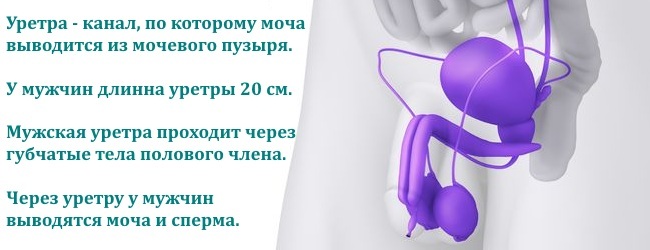Horseshoe kidney: what is it, symptoms, treatment, prognosis
Content
- What is a horseshoe kidney?
- Understanding the formation of a normal human kidney
- Horseshoe kidney formation
- Prevalence
- Horseshoe kidney symptoms
- Complications
- Diagnostics
- Horseshoe Kidney Treatment
- Conclusion
What is a horseshoe kidney?
As the name suggests, horseshoe kidney - This is a pathology in which two kidneys merge together, in the form of a horseshoe. However, the condition is characterized not only by the abnormal shape and structure of the kidneys, but also by their abnormal location.
Rather than being present in the upper abdomen, under the ribcage and next to the spine, the horseshoe kidney is usually found much lower in the pelvis. This is not the only genetic abnormality in the location or structure of the kidneys. Another common problem with horseshoe kidney is renal ectopia.
Before understanding why a horseshoe kidney forms and what its consequences are, it is necessary to understand the normal formation of a human kidney during fetal formation.
Understanding the formation of a normal human kidney

When we are in their infancy and develop into a full-fledged human, the kidneys (two paired organs) go through three stages of development before they form into fully functional and mature kidneys:
- pronephros (pronephros);
- mesonephros (primary kidney);
- metanephros (secondary kidney).
Imagine a primordial soup of cells and primitive structures that will combine to form a fully functional, developed kidney. The metanephros stage is reached after about 6 weeks of gestation. It consists of the so-called "metanephric mesenchyme" and "ureteral anlage". These structures eventually form the kidney and ureter.
Why should we understand this formation process? Well, once we understand that the human kidney undergoes certain structural and positional changes until does not culminate in its final form, it becomes easier to understand the deviation from the norm as a horseshoe kidney. It is therefore interesting to note that the metanephros stage described above (which precedes the developed kidney) is actually located in the pelvis, not where the mature kidney (upper abdomen) lies!
As we grow from embryo to child, the growth of the body leads to a change in the relative position of this developing kidney, so that it moves from the pelvis and gradually rises to its final position (under the ribcage and next to spine). Not only do the kidneys rise, they actually rotate inward. This process is called rotation, while the ascent of the kidney to its final location is called migration. This process is complete by the time the embryo is 8 weeks old.
Read also:Nephrolithiasis: causes, symptoms and treatment
Now that we have a general understanding of the formation of human kidneys, we can begin to understand that any disruption to the processes of rotation or migration will mean that these paired organs may not only be located in the wrong place, but possibly end up fused into one mass, rather than a distinct right and left kidneys.
Horseshoe kidney formation

A horseshoe kidney is what is called a "fusion anomaly." As the name suggests, a fusion abnormality occurs when one kidney fuses with another. This is due to any disruption in the normal migration of both kidneys. More commonly, there is a phenomenon in which abnormal migration affects only one kidney and not the other, which leads to the fact that both organs are present on one side of the spine. This is called cross renal ectopia.
In a normal horseshoe kidney, the lower pole of the kidney grows together and therefore forms the typical horseshoe shape. The tubes that drain urine from the kidneys (called ureters) are still present and drain each side separately. The fused part of the kidney is called the isthmus.
This isthmus may or may not lie symmetrically along the spine. If it lies closer to one side than the other, it is called an "asymmetric horseshoe kidney." Functional kidney tissue may or may not constitute an isthmus, so it is not unusual to see only two kidneys connected by a non-functioning strip of fibrous tissue.
Prevalence
On average, studies have reported the presence of a horseshoe kidney in anywhere from 0.4 to 1.6 patients out of every 10,000 live births. However, this is the only reported incidence. The actual incidence may be higher since the presence of a horseshoe kidney is often unknown to the sick patient.
Horseshoe kidney symptoms

Most people born with a horseshoe kidney do not develop symptoms. In fact, horseshoe kidneys are often accidentally found on x-rays, which are done for other reasons. However, when signs and symptoms are present, they are usually associated with abnormalities in urination caused by improper placement and orientation of the kidneys. Some of the symptoms are:
- Burning sensation during urination, increased frequency of urination, urgency of urination - all this occurs due to an increased tendency to develop urinary tract infections. This trend is due to suboptimal urine flow. This leads to the formation of pockets of static urine, which is an excellent medium for bacteria to grow and thrive.
- Pain in the side or pelvis due to obstruction of the flow of urine.
- Increased risk of kidney stones (nephrolithiasis). This, in turn, will cause pain in the side or pelvis as described above, but can also cause blood in urine. The stones themselves can lead to urinary tract infections.
- Urinary reflux from the bladder to the ureters, which can lead to an increased risk of urinary tract infections as well as kidney scarring. This is called vesicourete reflux.
- Hydronephrosis - This condition makes it difficult for the system to drain urine from the kidneys. This condition can be caused by renal or ureteral stones, or by compression of the ureters by external structures.
- Other genital abnormalities - Since the horseshoe kidney may be part of a broader spectrum of genetic abnormalities, other malformations of the urogenital tract may also be noted. These include undescended testes in boys or abnormal structure of the uterus in girls.
Read also:Pyelitis: symptoms and treatment in women and men
Complications
Most complications stem from the aforementioned symptoms and signs of a horseshoe kidney, often associated with urinary tract obstruction.
Interestingly, in patients with a horseshoe kidney increased risk the occurrence of a certain type of kidney tumor called "Wilms tumor». The reasons for this risk are not fully understood. This was first established in a report by the National Wilms Tumor Research Group, which was carried out for almost 30 years and identified 41 patients with Wilms tumor who also had horseshoe kidney.
Perhaps a more pressing problem in everyday life is the fact that the horseshoe kidney is more susceptible to injury from blunt abdominal trauma. For example, if a seat belt is injured in a car accident, the belt safety can crush the abdominal contents, including the horseshoe kidney, in relation to spine. Normal human kidneys, which sit higher and are not connected to each other, are usually not at this risk.
Diagnostics

As mentioned above, a horseshoe kidney is usually found on incidental imaging of the abdomen. Further investigations are usually needed if the above symptoms, signs, or complications have been noted. For example, if a person suffers from recurrent urinary tract infections with a horseshoe kidney, a nephrologist will usually recommends what is called a urinary cystourethrogram to determine if any reflux is present urine.
Other examinations that can be ordered include:
- Kidney function screening: These usually include blood tests such as urea nitrogen and creatinine levels, and an assessment of the glomerular filtration rate (GFR). A urine test for protein or blood will also be helpful.
- Renal artery scan to confirm obstruction.
- CT urography.
Horseshoe Kidney Treatment
If there are no serious complications or symptoms, and kidney function is normal, no further treatment is needed. The patient, however, should still be warned of the susceptibility of his kidney to blunt abdominal trauma.
Read also:Acute renal failure
If there are complications noted due to obstruction of the urine flow, the patient should be examined by a specialist. (nephrologist and urologist) to determine next steps and find out if surgical correction can correct obstruction. Most patients have a good long-term prognosis.
Conclusion
Remember that a horseshoe kidney is a relatively rare disorder of the position and structure of the kidney. Although most patients do not show symptoms and their horseshoe kidney is usually accidentally found on imaging, be aware that symptoms may occur in a minority of patients and are usually associated with obstruction of the urine flow, kidney stones, or urinary infections ways.
If symptoms are present, treatment may be necessary, including surgery to correct obstruction, but in most patients the disease can be safely controlled without surgical intervention. While you need to be aware of the increased risk of injury to the horseshoe kidney (especially with blunt abdominal injury), remember that long-term prognosis is favorable!



